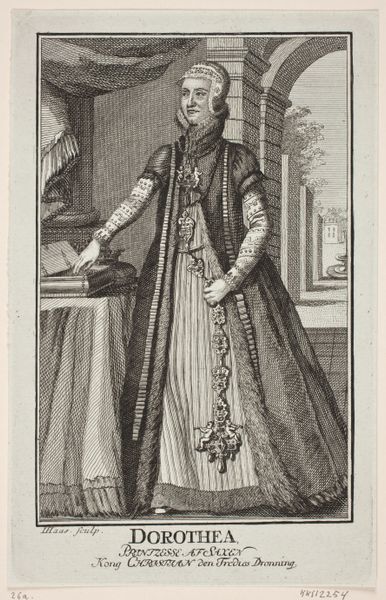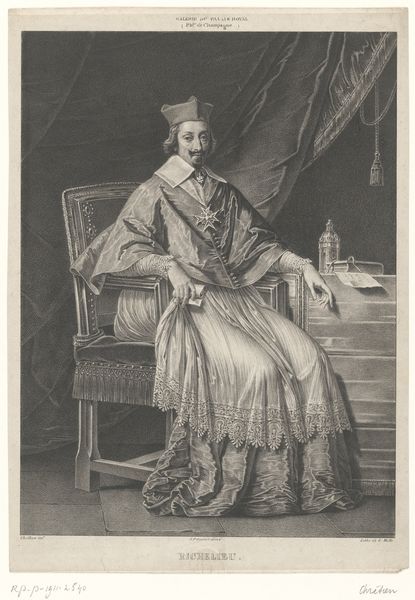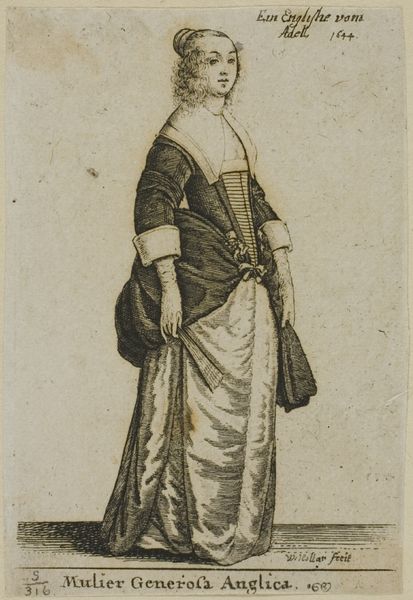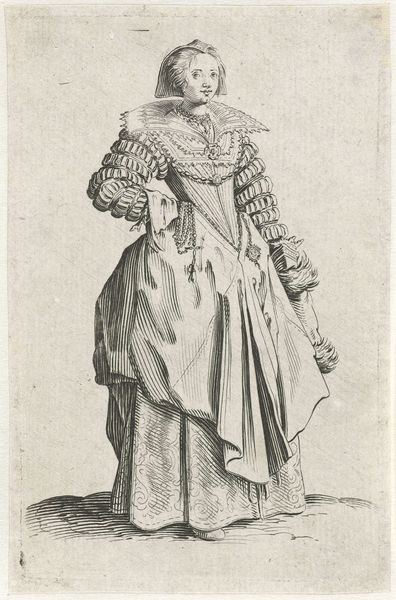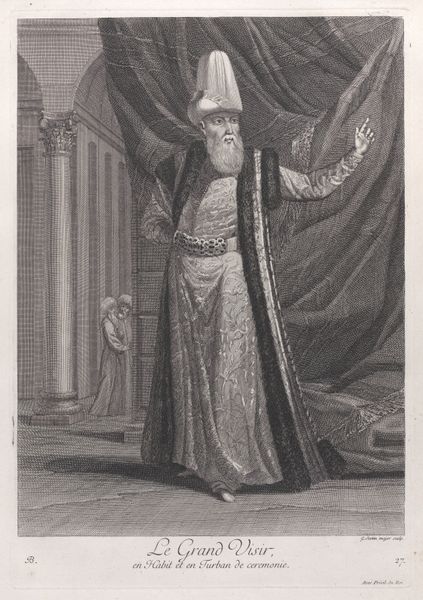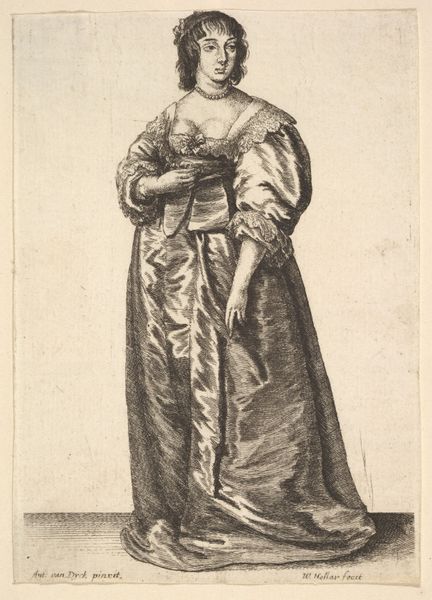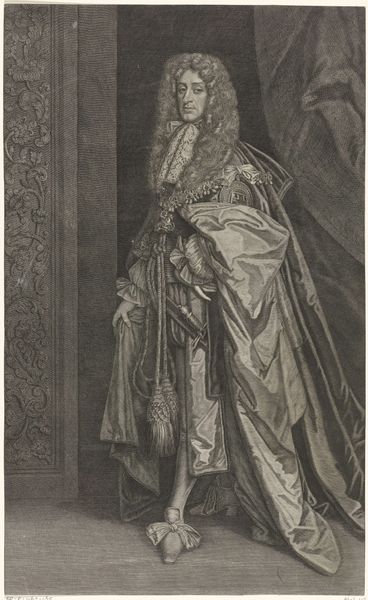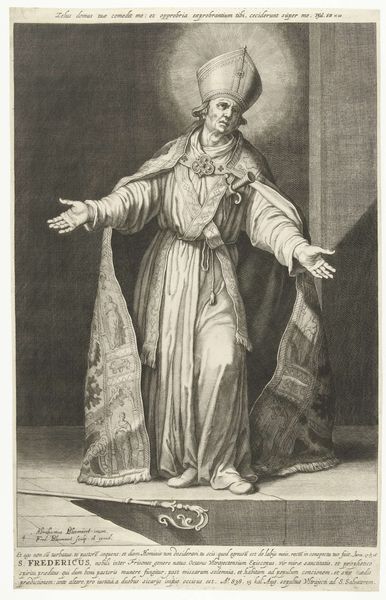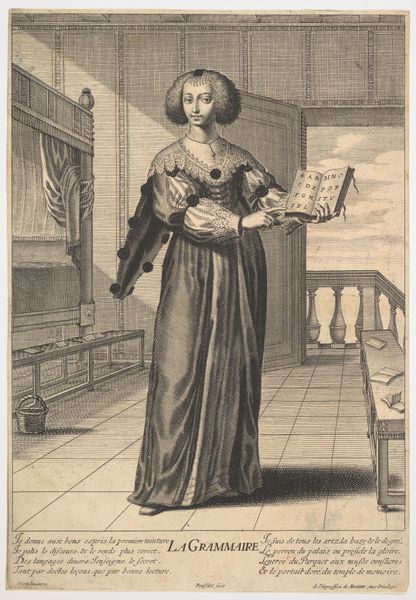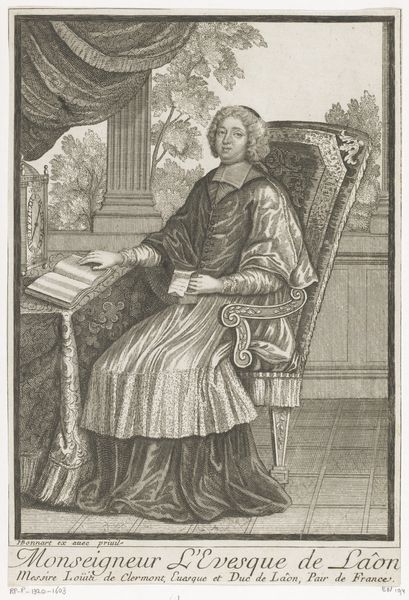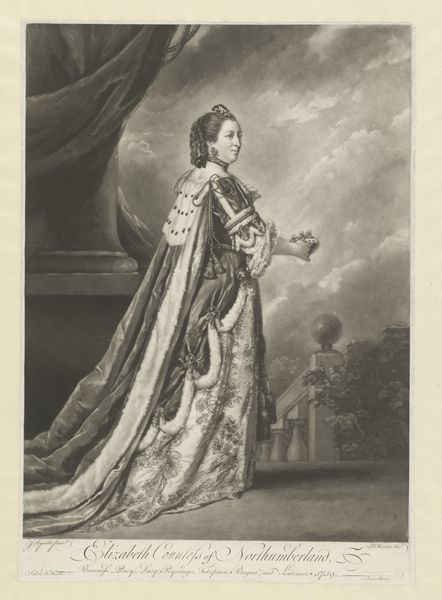
drawing, print, engraving
#
portrait
#
drawing
#
baroque
# print
#
form
#
portrait reference
#
jewelry
#
old-timey
#
19th century
#
men
#
line
#
portrait drawing
#
history-painting
#
engraving
Dimensions: Sheet: 12 3/16 × 8 3/16 in. (31 × 20.8 cm)
Copyright: Public Domain
Curator: This print, dating from around 1620 to 1660, is titled "The Reformed Woman," currently residing at The Metropolitan Museum of Art. It is attributed to Jean Couvay. Editor: It has a rather solemn and almost austere presence, despite the apparent wealth suggested by the clothing and jewelry. The grayscale reinforces that feeling, focusing my attention immediately on the texture and depth achieved. Curator: Exactly. The choice of engraving really allows for detailed renderings, as one observes how Couvay uses very precise lines to outline form, capture texture, and imply subtle gradations of light and shadow, lending this image its gravitas. Note also the textual addition at the bottom; this "reformed woman" ostensibly adheres to social standards prescribed for her by figures of authority. Editor: I do notice the writing, giving us further information on who the artist thought this was; what's more interesting for me is the composition itself. Look at how her pose suggests both elegance and restraint. One hand holds what looks to be lace, while the other possesses what seems like a prayer bead—juxtaposing ornamentation and faith in a subtle dialectic. Curator: I see her ornamentation here less as an appreciation for vanity, and more as an acknowledgement of the power social standing holds. In other words, I argue the reformed woman does not entirely disavow these worldly temptations. These beads or jewelry themselves suggest this ambiguity by reflecting a more grounded state between excess and the absence of personal property. Editor: It really comes down to what one assumes her “reformation” means. It’s interesting to consider the possibility she hasn’t actually changed her identity. Her dress does hide her body and thus keeps with the social order of things. At the same time, there are ornate decorations present, contradicting assumptions about piety as understood here. Curator: So, is Couvay celebrating, criticizing, or simply documenting this "reformed" woman? It leaves you pondering. Editor: A really striking portrait, capturing this pivotal moment through the sheer force of contrast. The interplay between material extravagance and suggested religiousness invites interpretation.
Comments
No comments
Be the first to comment and join the conversation on the ultimate creative platform.
